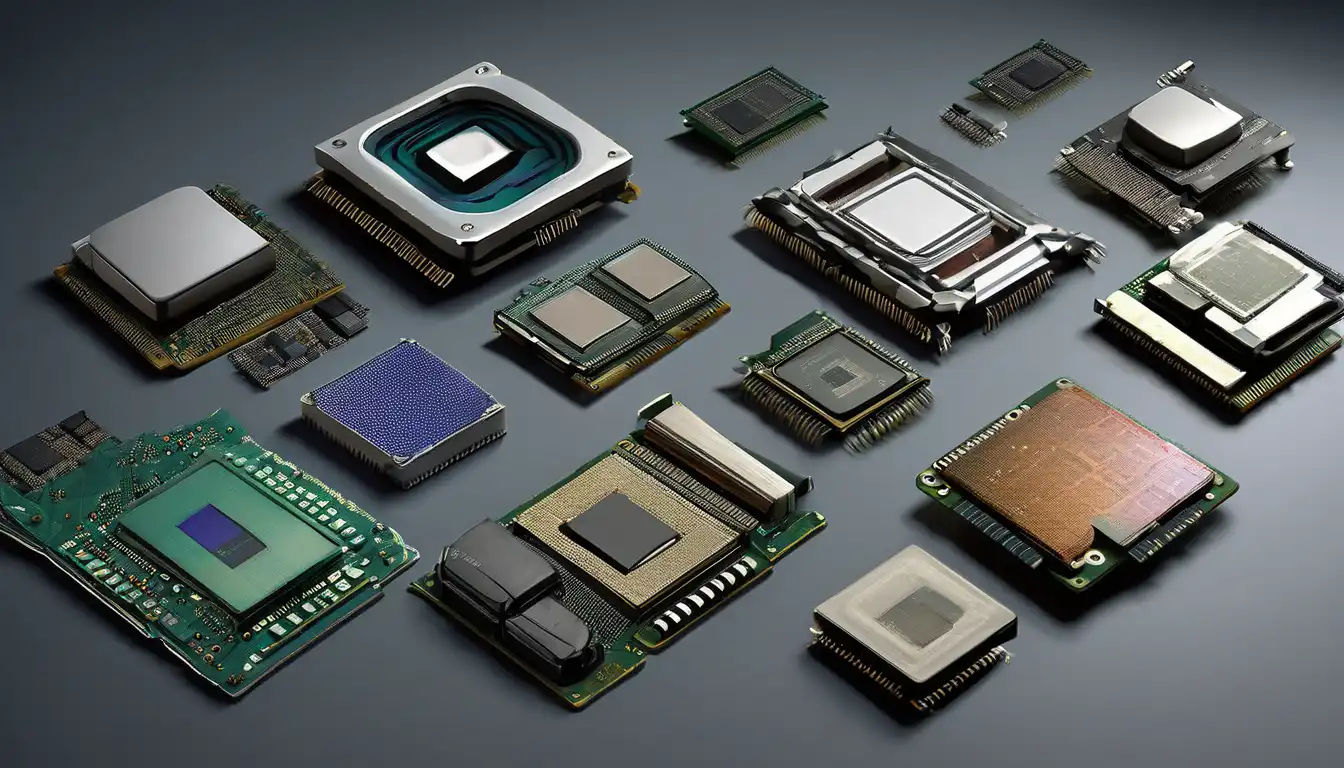The Dawn of Computing: Early Processor Technologies
The evolution of computer processors represents one of the most remarkable technological journeys in human history. Beginning with primitive vacuum tube systems in the 1940s, processors have undergone revolutionary changes that have fundamentally transformed how we live, work, and communicate. The first electronic computers, such as ENIAC (Electronic Numerical Integrator and Computer), utilized approximately 17,000 vacuum tubes and occupied an entire room. These early processors operated at speeds measured in kilohertz and consumed enormous amounts of power while generating significant heat.
Transitioning from vacuum tubes to transistors in the late 1950s marked the first major leap in processor evolution. The invention of the transistor at Bell Labs in 1947 paved the way for smaller, more reliable, and more energy-efficient computers. This shift enabled the development of mainframe computers that could handle complex calculations for scientific research and business applications. The IBM 700 series, introduced in the 1950s, demonstrated the potential of transistor-based processors for commercial use.
The Integrated Circuit Revolution
The next critical milestone arrived with the development of integrated circuits (ICs) in the 1960s. Jack Kilby and Robert Noyce independently developed methods to combine multiple transistors on a single silicon chip, creating the foundation for modern microprocessor technology. This innovation allowed for exponential growth in processing power while simultaneously reducing size and cost. The introduction of the first commercially available microprocessor, the Intel 4004 in 1971, marked the beginning of the personal computing era.
Key developments during this period included:
- Moore's Law prediction in 1965, which accurately forecasted the doubling of transistor density every two years
- The creation of the first 8-bit processors like the Intel 8008 and 8080
- Development of reduced instruction set computing (RISC) architecture
- Introduction of complementary metal-oxide-semiconductor (CMOS) technology
The Personal Computing Revolution: 1980s-1990s
The 1980s witnessed the explosion of personal computing, driven by increasingly powerful and affordable processors. Intel's x86 architecture became the industry standard with processors like the 8086, 80286, and 80386. These chips introduced protected mode operation, virtual memory support, and 32-bit processing capabilities. Meanwhile, competitors like Motorola with their 68000 series processors powered early Apple Macintosh computers and established alternative architectures.
The 1990s brought unprecedented competition and innovation in the processor market. Intel's Pentium processor, introduced in 1993, featured superscalar architecture that could execute multiple instructions per clock cycle. This period also saw the rise of Advanced Micro Devices (AMD) as a serious competitor, challenging Intel's dominance with their K5 and Athlon processors. The processor wars of this decade drove rapid performance improvements and price reductions, making powerful computing accessible to millions of users worldwide.
Key Architectural Advances
Several architectural innovations defined this era of processor evolution:
- Introduction of pipelining techniques to improve instruction throughput
- Development of branch prediction algorithms to minimize pipeline stalls
- Implementation of cache memory hierarchies to reduce memory latency
- Adoption of SIMD (Single Instruction, Multiple Data) extensions for multimedia processing
The Multi-Core Era: 2000s-Present
As processor clock speeds approached physical limits in the early 2000s, the industry shifted focus toward multi-core architectures. Instead of increasing clock frequency, manufacturers began placing multiple processor cores on a single chip. This approach allowed for improved performance while managing power consumption and heat generation more effectively. Intel's Core 2 Duo processors, launched in 2006, demonstrated the effectiveness of this strategy and established multi-core processing as the new standard.
The current era of processor evolution is characterized by specialization and heterogeneity. Modern processors incorporate not only multiple CPU cores but also integrated graphics processing units (GPUs), artificial intelligence accelerators, and specialized processing units for specific tasks. Apple's M-series processors, AMD's Ryzen series, and Intel's Core processors represent the state of the art in consumer computing, offering unprecedented performance per watt and integrated capabilities that were unimaginable just decades ago.
Current Trends and Future Directions
Today's processor evolution focuses on several key areas:
- Artificial intelligence and machine learning acceleration
- Energy efficiency and thermal management
- Heterogeneous computing architectures
- Quantum computing research and development
The integration of AI-specific hardware, such as neural processing units (NPUs), has become standard in modern processors. These specialized components accelerate machine learning tasks while reducing power consumption. Meanwhile, research into quantum computing promises to revolutionize processing capabilities once again, potentially solving problems that are currently intractable for classical computers.
Impact on Society and Technology
The evolution of computer processors has fundamentally transformed nearly every aspect of modern society. From enabling global communication networks to powering scientific research and medical advancements, processors have become the backbone of our technological infrastructure. The smartphone in your pocket contains more processing power than the computers that guided Apollo missions to the moon, demonstrating the incredible pace of advancement.
Looking forward, processor evolution continues to drive innovation across multiple domains. Edge computing, Internet of Things (IoT) devices, and autonomous systems all rely on increasingly sophisticated processor technologies. The ongoing miniaturization of processing elements, combined with new materials and architectural approaches, suggests that the evolution of computer processors is far from complete. As we approach potential limits of traditional silicon-based computing, researchers are exploring alternatives including photonic computing, neuromorphic architectures, and quantum systems that may define the next chapter in processor evolution.
The journey from vacuum tubes to modern multi-core processors represents one of humanity's greatest engineering achievements. Each generation has built upon the innovations of the previous, creating an exponential growth curve that has reshaped our world. As we continue to push the boundaries of what's possible, the evolution of computer processors remains a fascinating story of human ingenuity, competition, and technological progress that shows no signs of slowing down.
